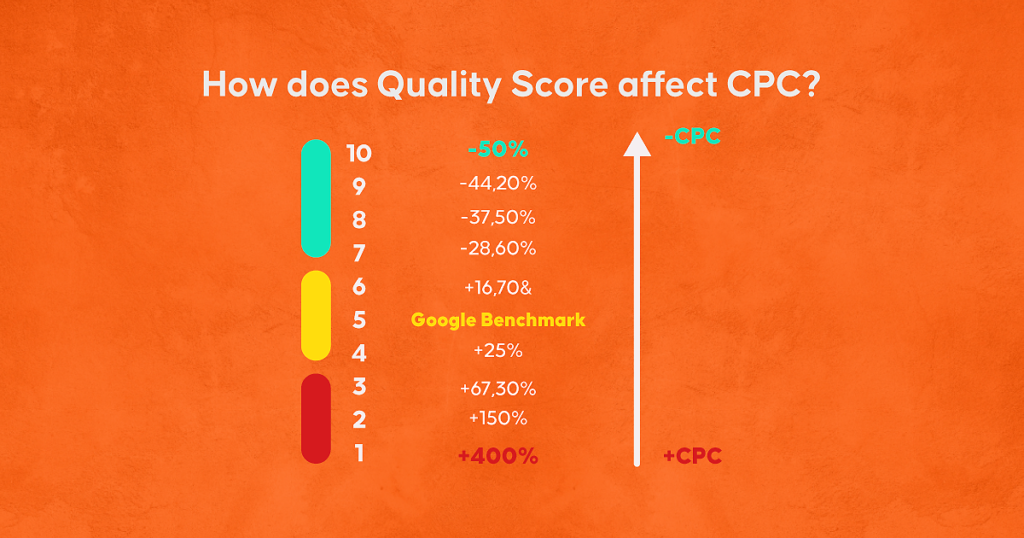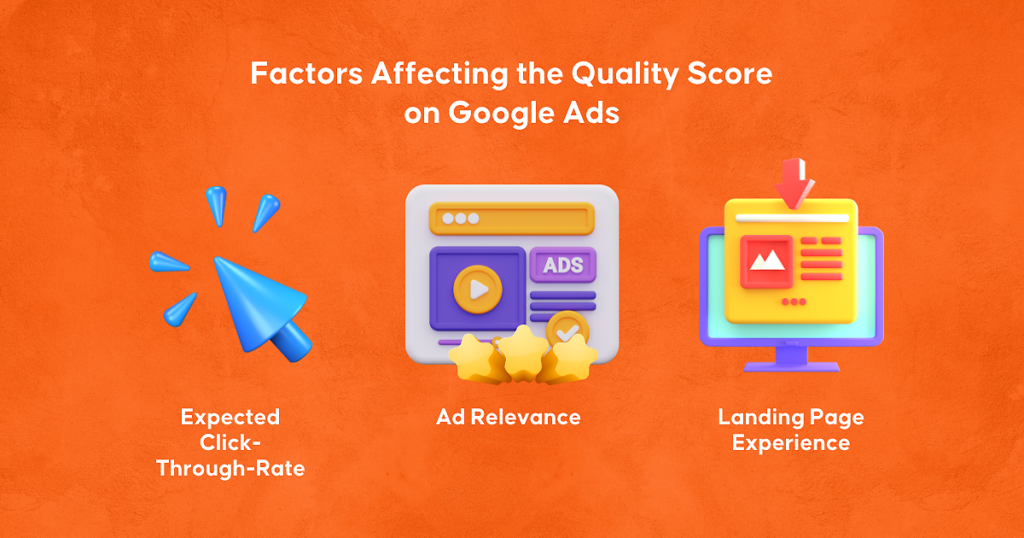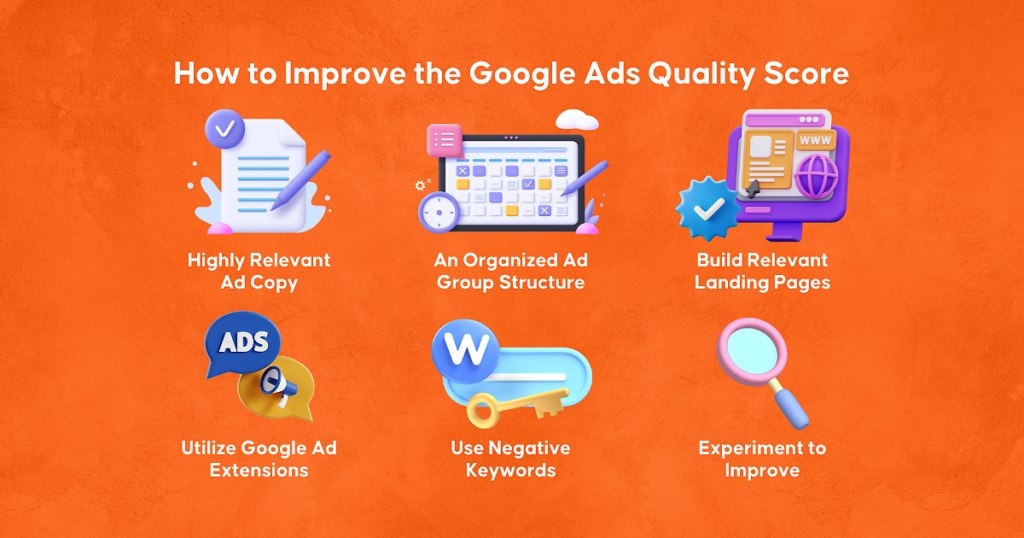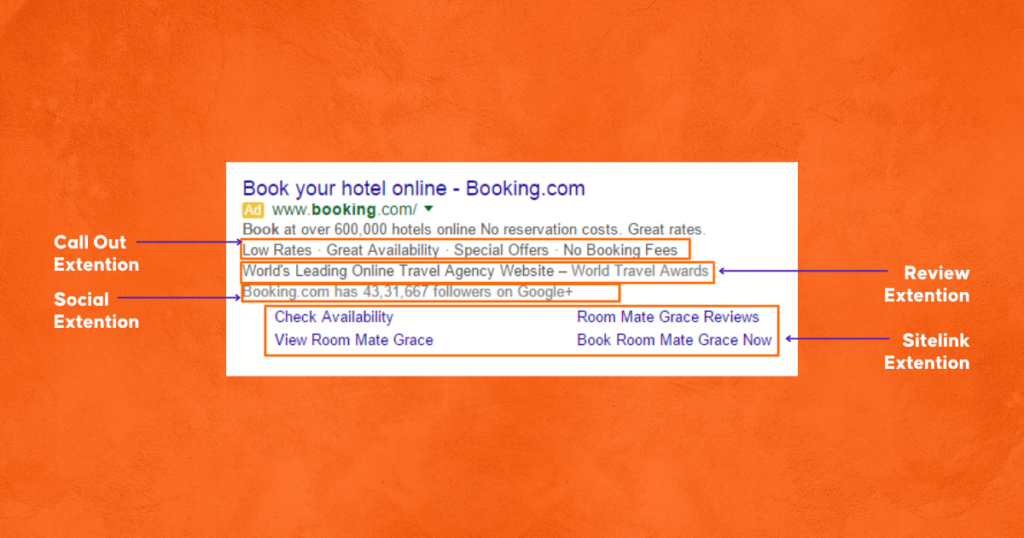Inquivix HQ
1-903, 18 Eonju-ro 146-gil,
Gangnam-gu, Seoul, Korea
06057

Knowing how to improve the quality of your Google Ads is crucial in running a successful ad campaign. Without a high Google quality score, your online advertisements may not be presented to search engine users.
Let’s find out what the quality score is all about, and the factors that affect it. We’ll also explore how quality scores can be improved on the Google Ads platform so that all your future campaigns will be visible to your target audience.
What Is the Google Ads Quality Score and Why Is It Important?
It is a rating that evaluates the quality of your Google Ads. The quality score you will receive on the Google Ads platform is Google’s assessment of your advertisements and the relevant keywords associated with those ads. Google uses these quality scores to determine which advertisements get displayed on the search engine results pages (SERPs) whenever a user types in a search query.
A low-quality score means that your ad quality or ad relevance is low, and it might not even be served in response to users’ search queries. This is to ensure a great search engine experience for Google users.

The quality score affects the cost-per-click (CPC) as well. A high-level quality score will allow you to reach a wider audience with a lower biding price. Even if you can afford a high bid price, the ad rank is determined by multiplying your maximum bid by your quality score. This means that if your quality score is too low, you cannot achieve a high ad rank simply by spending more money. A higher ad budget alone won’t help you here.
The higher the ad rank, the better your ad position and visibility in response to the relevant search terms on the SERPs. A higher quality score means it will be rewarded with a higher ad rank, only then will you be able to ensure the success of your advertisements on Google Ads.
The Google Ads Quality Score Components
Google has a set of criteria it uses to determine ad quality and relevance before giving each one its quality score. There is a rumored account-level quality score that Google uses internally to evaluate your account’s historical performance with keywords and ads.
However, the company hasn’t officially confirmed this, anyone wishing to receive a higher quality score to climb the ad rankings and lower their bidding prices should pay attention to the following quality score components. These are the expected click-through rate, ad relevance, and landing page experience.

1. Expected Click-Through-Rate
2. Ad Relevance
3. Landing Page Experience
Expected Click-Through-Rate (CTR)
The expected click-through rate is Google’s way of measuring the likelihood that your ad will get clicked on when displayed in the results for a user’s search query. The more users will click on your ad in search results, the higher the click-through rate will be.
Google will use the historical performance of your Google Ads account to determine the expected CTR. This means that if your previous ads had been deemed relevant by users and convinced them to click more often, then you will score highly here.
Ad Relevance
Ad relevance is the measure of how closely the ad matches a user’s search intent and the search terms they type into their query. If your ad copy is relevant to their search, your ad relevance will be high. You need to be good at conveying your value proposition using a few words and convincing the user to take an action, which in this case is to click on the ad.
Landing Page Experience
The final measure of the quality score is determined by the landing page experience that you have created. If both the ad and landing page include the same keyword that triggered the ad in the first place, then your landing page quality score will be high. This is because Google will look at the keywords and understand that your landing page is indeed relevant to the user’s search terms. Landing pages that load fast, are fully functional, and provide great content are also deemed good in Google’s eyes.
How to Improve Quality Score on Google Ads
A higher quality score than your competitors means that you will be able to obtain the same position as they do in the SERPs for a lower price. Therefore, there is a financial incentive to achieve a high-level quality score on Google Ads. Let’s find out what you can do to increase your quality score on this platform.

1. Highly Relevant Ad Copy
2. An Organized Ad Group Structure
3. Build Relevant Landing Pages
4. Utilize Google Ad Extensions
5. Use Negative Keywords
6. Experiment to Improve
Improving the Ad Copy
The ad copy has to be written in such a way that they include the keywords you will be targeting. By including these keywords, you are not only telling Google that your ad copy is relevant to the search query but also conveying to the search engine user that you can provide what they’re looking for, convincing them to click on it. A well-written ad copy can therefore improve your click-through rate.
There are many types of ads you can create on Google’s platform and each of them has their own style. In general, the ad copy will include a heading and a small description. Including keywords in both the heading and the description is the way towards getting a high-quality score. Aside from the relevant keyword-quality score relationship, including terms like ‘free delivery’, ‘discount’, and ‘limited time offer’, can also improve the CTR. These terms can also be included as callouts on ad extensions which we will cover later.
Organized Ad Group Structure
You will need to understand how to manage ad groups on the platform to achieve any level of success here. Each campaign you run on the Google Ads platform can have multiple ad groups, with a set of keywords assigned to each ad group. Naturally, this means that your keyword research will have to be completed by creating ad groups. It’s also important to keep your product lines or service packages organized accordingly.
You can assign a keyword or set of related keywords to each ad group, and write the ad copy for each ad group as mentioned earlier. In the case of keywords that generate high traffic, you can even make single-keyword ad groups. A landing page will also be assigned to each ad group based on what product or service it will be offering.
Build Relevant Landing Pages
You will need to build landing pages based on which products or services you will be offering to potential customers. Each of these landing pages will be assigned to an ad group depending on the search terms you are targeting. For example, if a user searches for ‘denim trousers’, they should be directed to your landing page that relates to that keyword.
A retailer operating an e-commerce store may require thousands of landing pages to meet their customer requirements. These types of businesses can utilize automated tools that allow them to not only quickly generate these unique landing pages, but also the ad copies that need to be assigned to the relevant ad groups along with the keywords.
Utilize Google Ad Extensions
Another thing that affects the quality score formula is the ad extensions that provide additional information to the ad copy. These extensions can provide contact details, product pricing, and site links to direct users to specific sub-pages on your website, your business location, Google reviews for your business, and more.
Using ad extensions when utilized properly can increase your click-through rate since they provide additional context that can help convince a user to click on your ad. Therefore you shouldn’t forget to use this easy method to improve your quality score.

Use Negative Keywords
There may be search terms that are not relevant to your business. The best way to avoid these triggering your ads is to utilize negative keywords. This is important since negative keywords triggering your ads will cause your ad relevance and CTR to fall since users will not wish to click on something they are not interested in. Be aware of these unrelated search terms and include them as negative keywords when configuring your ad groups. This will prevent these terms from lowering your quality score.
Keep Experimenting to Improve Quality Scores
The quality score as mentioned above is affected by a variety of factors. You might wish to experiment with different ad groups, ad copies, and landing pages to see how they affect your quality score. You can monitor the performance of your ads to discover which ones are generating more conversions, and which ones are underperforming with low-quality scores.
Over time, you will get better at developing ads that have a high-quality score and be able to better compete with other advertisers on the Google Ads platform.
Want to Improve Your Google Ads Quality Score?

If you’re having trouble competing with other advertisers, and struggling to improve your quality score, you should get help from somebody who has experience in launching successful Google Ads campaigns. And that’s where Inquivix steps in! We are experts in running PPC advertising campaigns, from performing keyword research to creating ads that users will want to click on and developing the landing pages you will need to convert your website visitors into paying customers.
In addition to improving the quality score of your ads, we can provide on-page search engine optimization, social media marketing, and web design services. For all things digital marketing, visit Inquivix today!
FAQs
The expected click-through rate (CTR), ad relevance, and landing page experience are what affect the quality score on the Google Ads platform.
You can improve the quality score by making your ad copy more relevant to the user’s search query, organizing your ad group structure properly, building landing pages that offer a great experience to visitors, and utilizing ad extensions, and negative keywords. You can also continue to experiment as you gain a better understanding of how the quality score can be increased.
